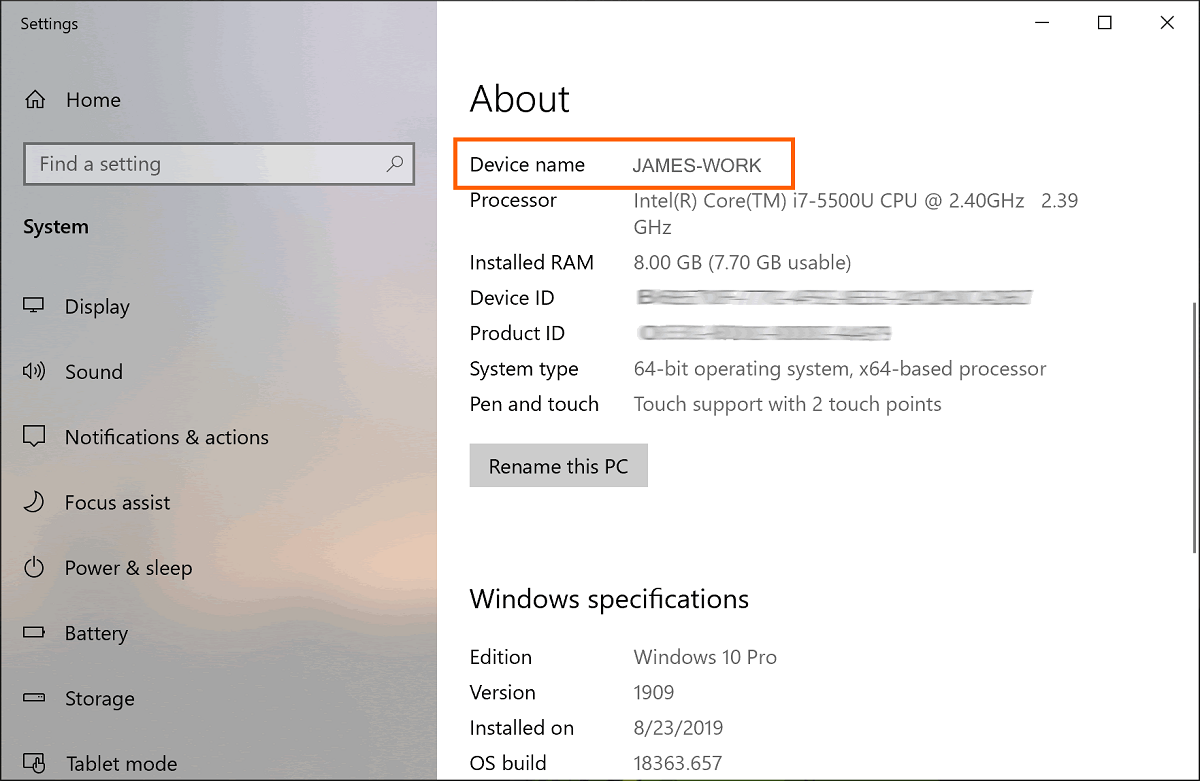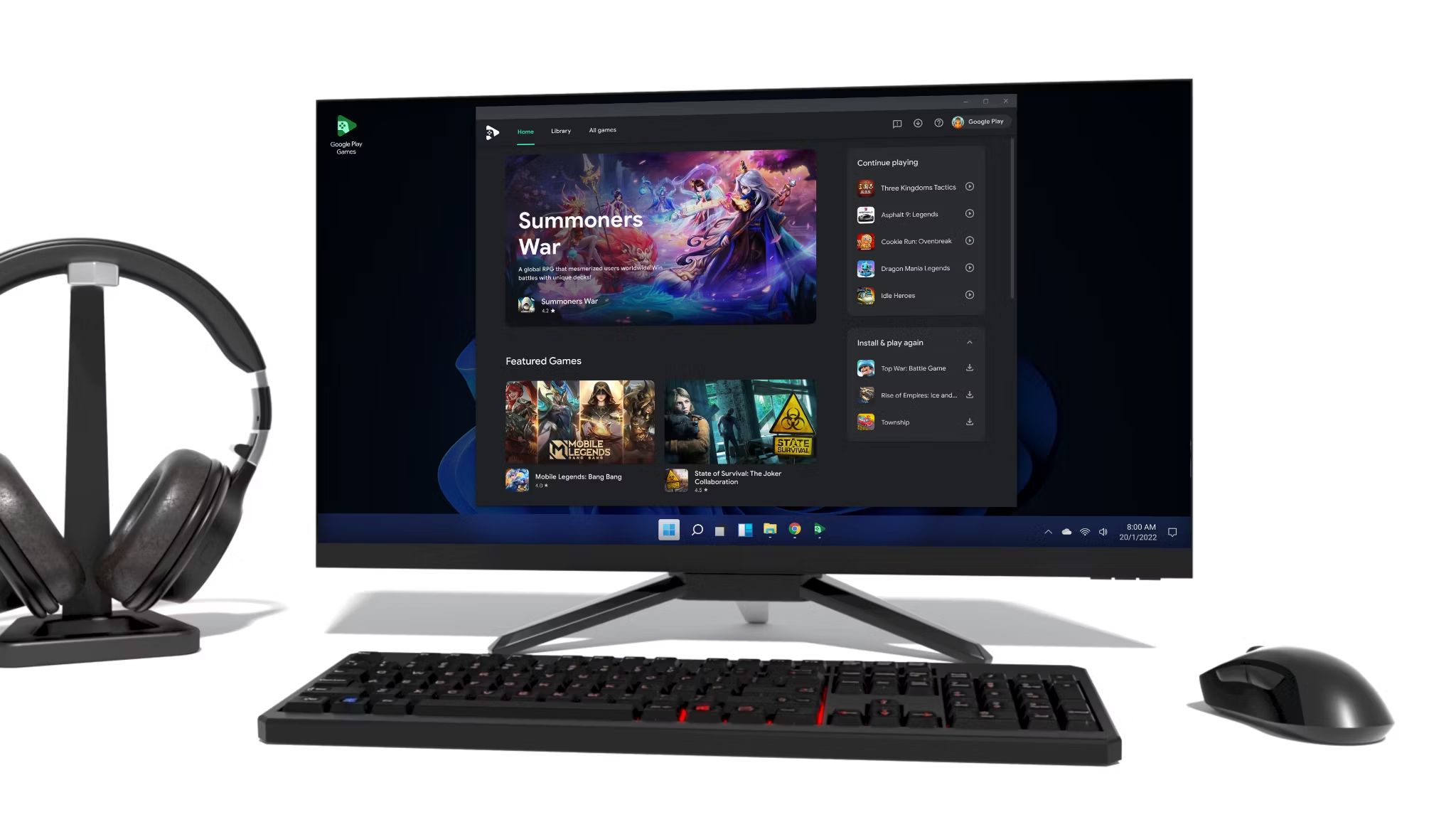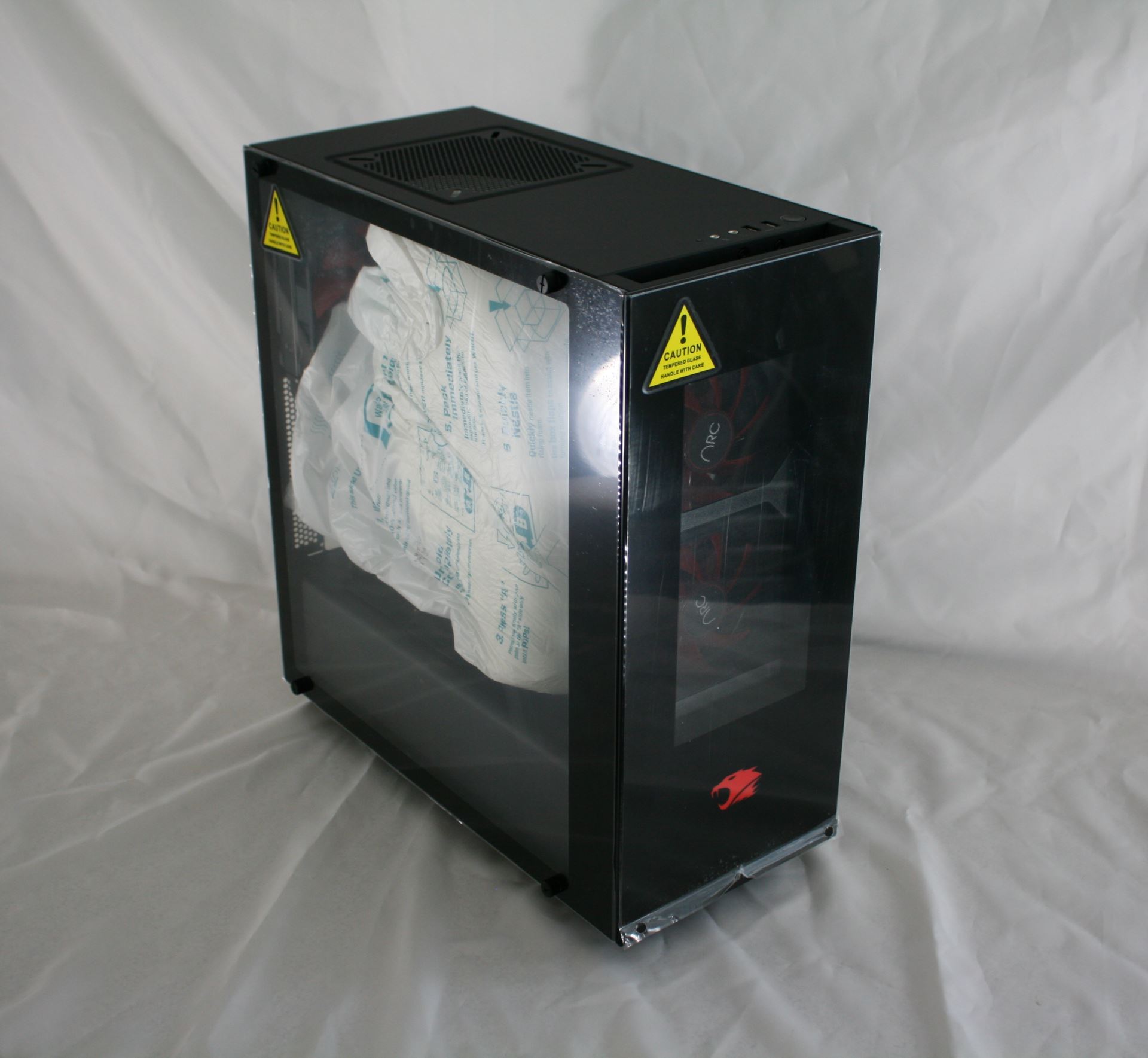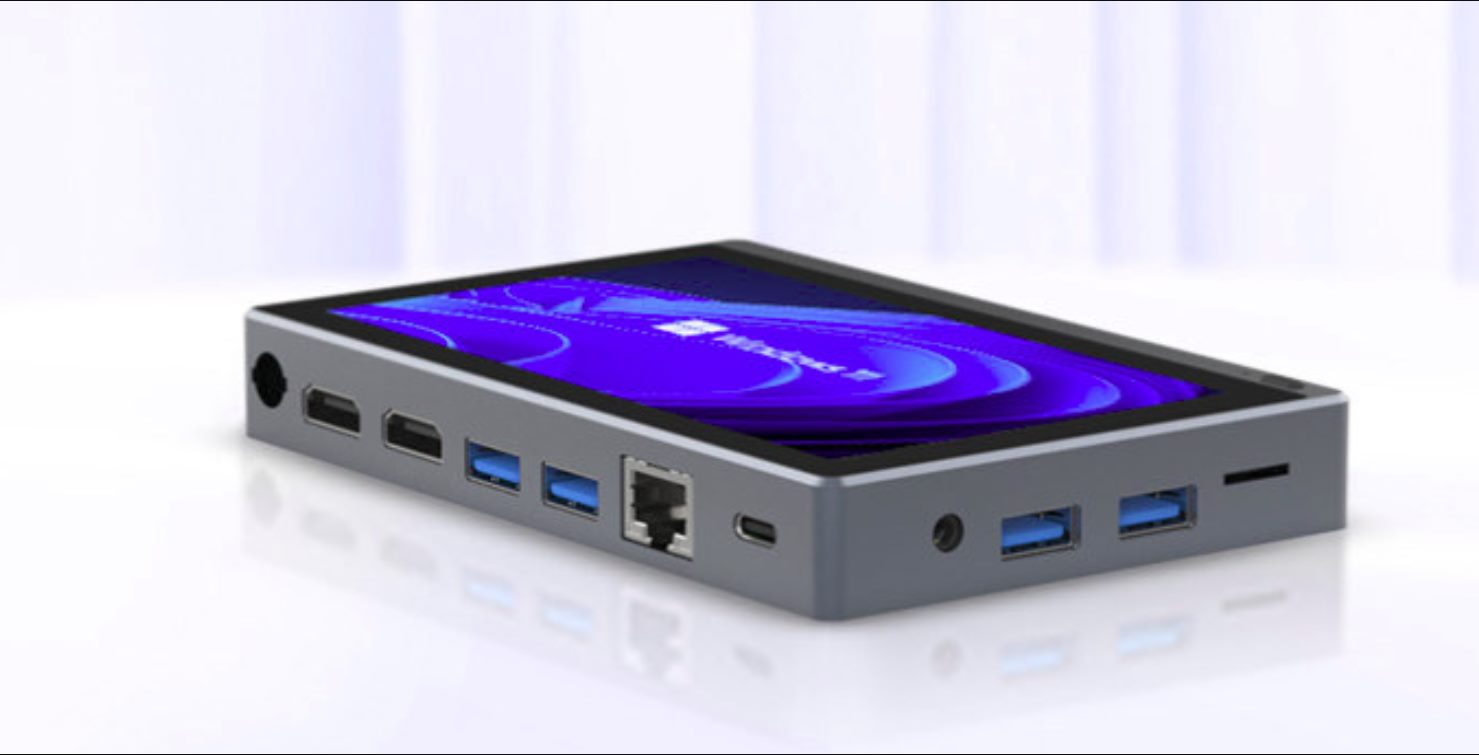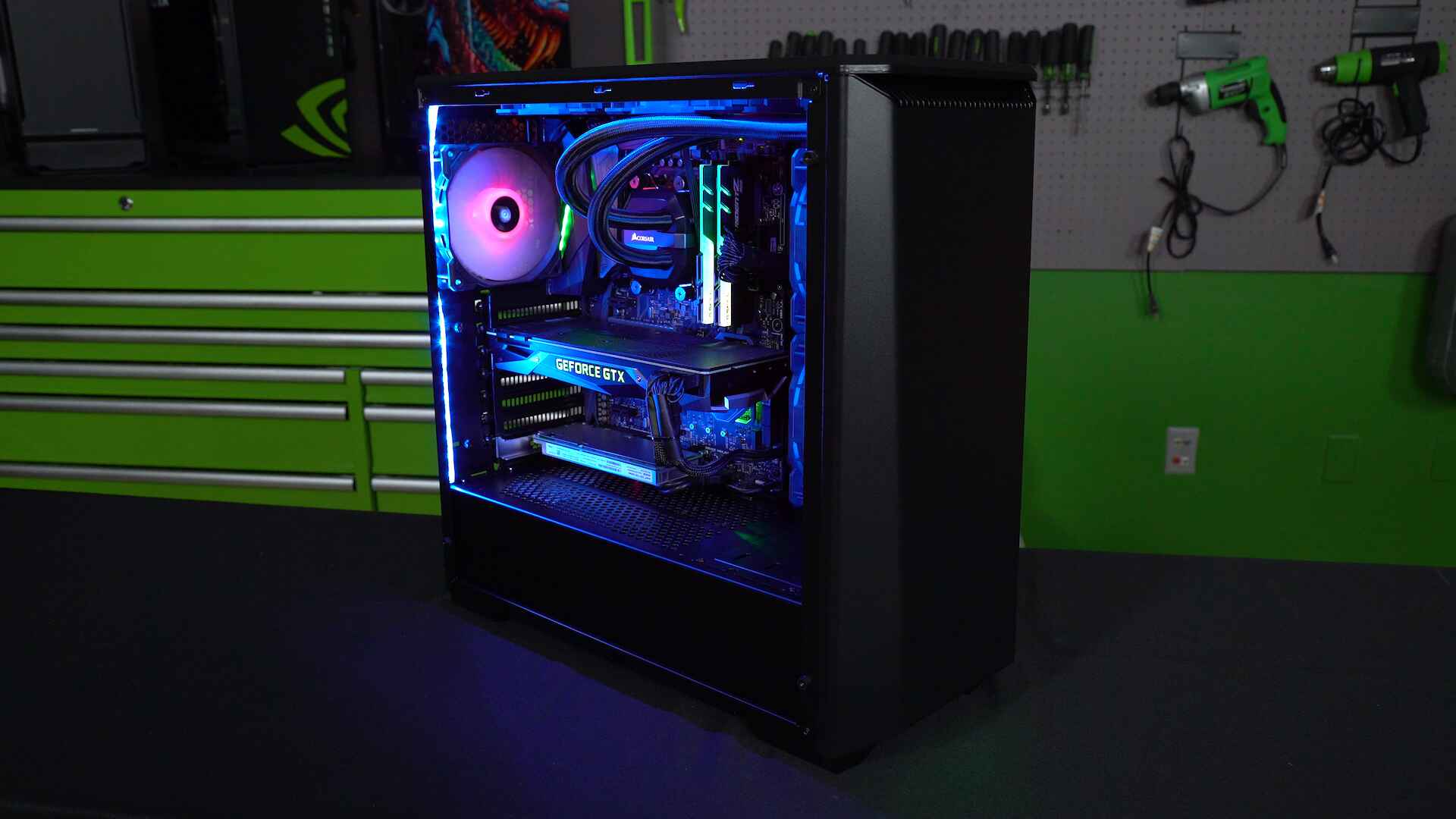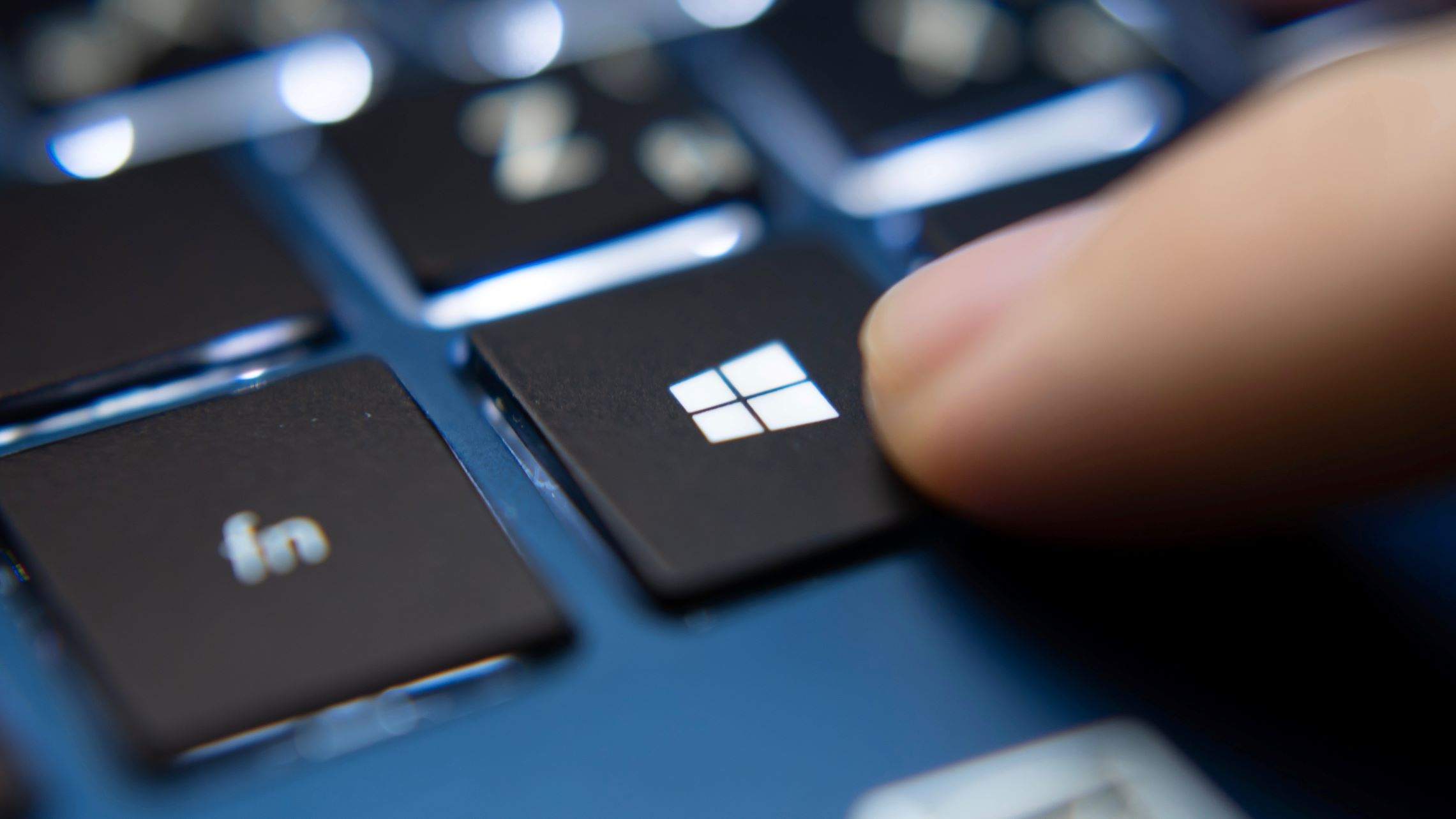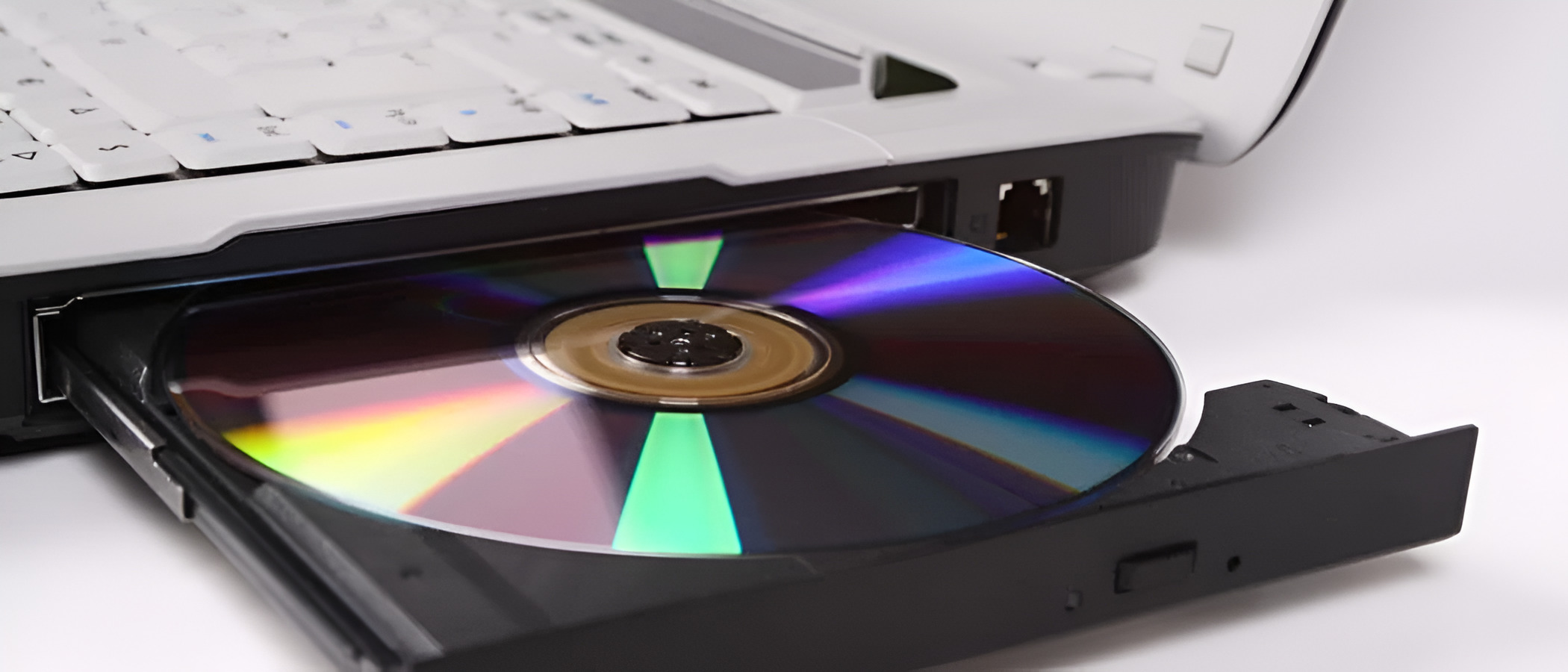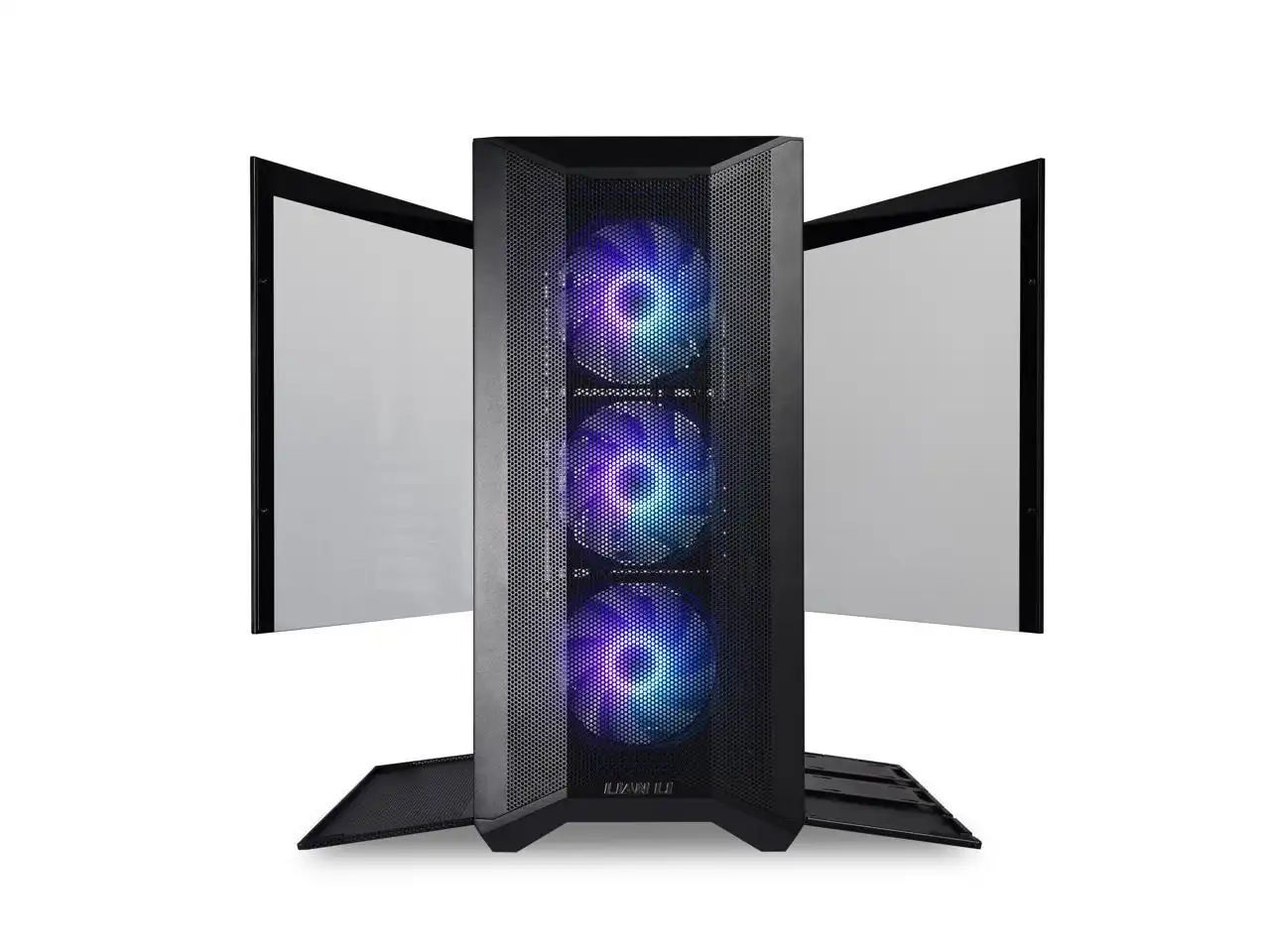Introduction
Welcome to the era of technology where personal computers (PCs) have become an integral part of our lives. Whether you use a Windows, Mac, or Linux-based system, knowing your PC’s name is essential for various reasons. The PC name is a unique identifier that distinguishes your device from others on a network. It is like a digital nameplate that allows you to interact with your computer and other connected devices more efficiently.
In this article, we will explore the significance of knowing your PC’s name and how to find it on different operating systems. Understanding how to locate this information will empower you to troubleshoot issues, connect to shared resources, and personalize your computer to better suit your needs.
No matter if you’re a beginner or an experienced user, discovering the PC name is a fundamental skill that will enhance your overall computing experience. So, let’s dive in and uncover the methods to find your PC’s name on Windows, Mac, and Linux-based systems.
What is a PC Name?
A PC name, also known as a computer name or hostname, is a unique label assigned to individual computers on a network. It serves as an identifier that allows devices to communicate with each other effectively. Just like we have names to differentiate ourselves from others, computers use names to distinguish themselves from other devices in a network.
The PC name can be thought of as a digital address for your computer. It is a combination of letters, numbers, and symbols that make up a unique identifier. This identifier is used by various network protocols and services to establish connections between computers and transfer data.
The PC name is typically assigned during the operating system installation process. However, it can be changed or customized by the user to better reflect their preferences or to suit the needs of a specific network or environment. It is important to note that the PC name is not related to the brand or model of the computer, but rather serves as a distinct label for that particular device on a network.
Having a meaningful and easily identifiable PC name can be particularly useful in environments where multiple computers are interconnected. It simplifies the process of locating and accessing specific devices, especially in scenarios involving file sharing, remote desktop connections, or network administration.
In the next sections, we will explore how to find your PC name on different operating systems, including Windows, Mac, and Linux. Understanding how to locate this information will enable you to effectively manage your computer within various networking environments.
Importance of Knowing PC Name
Knowing your PC’s name may seem like a trivial detail, but it plays a crucial role in several aspects of computing. Here are some key reasons why it is important to be aware of your PC’s name:
- Network Identification: The PC name serves as an identifier that distinguishes your computer from others on a network. By knowing your PC’s name, you can easily locate and connect to it when accessing shared resources, like printers or file servers. It allows you to streamline your network interactions and ensures seamless communication between devices.
- Troubleshooting: In the event of technical issues or network errors, knowing your PC’s name can expedite the troubleshooting process. System administrators or support personnel often require this information to diagnose and resolve issues specific to your computer. By providing your PC’s name, you can assist in pinpointing and addressing problems more efficiently.
- Remote Access: If you frequently access your computer remotely, either from another location in your home or from a different geographical location, knowing your PC’s name is vital. It allows you to establish remote desktop connections or access your files and applications using services like Windows Remote Desktop or macOS Screen Sharing. With the PC name readily available, you can connect to your computer easily and securely.
- Network Administration: For network administrators or IT professionals responsible for managing multiple computers, knowing the PC names is essential. It enables them to efficiently monitor, control, and maintain network resources, ensuring smooth operation and optimal performance. With clear and identifiable PC names, network administration becomes more organized and manageable.
- Personalization: Renaming your PC to a more memorable or personalized name adds a personal touch to your computing experience. It allows you to distinguish your computer from others and make it truly yours. Whether it’s a fun nickname or a descriptive name reflecting its purpose, giving your PC a unique identity can make interacting with it more enjoyable.
As you can see, knowing your PC’s name offers numerous advantages in terms of network management, troubleshooting, remote access, and personalization. It empowers you to navigate your computer and network with ease, simplifying various tasks and enhancing your overall computing experience.
How to Find PC Name on Windows
On Windows, there are a few simple methods to find your PC’s name. Here are the steps:
- Using System Properties: One way to find the PC name is through the System Properties window. Press the Windows key + Pause Break or right-click on the “This PC” icon and select “Properties” from the context menu. In the System Properties window, you will find the computer name listed under the “Computer name, domain, and workgroup settings” section.
- Using Command Prompt or PowerShell: Another method is to use the Command Prompt or PowerShell. Open either of these command-line interfaces by searching for “cmd” or “PowerShell” in the Start menu. Once opened, type “hostname” without the quotes and press Enter. The result will display the PC name directly in the command-line window.
- Using Settings: If you prefer a graphical user interface (GUI), you can also find the PC name through the Windows Settings app. Open the Settings app by pressing Windows key + I, then navigate to “System” and select “About” from the sidebar. The PC name will be displayed under the “Device specifications” section.
Whichever method you choose, once you locate your PC name, make a note of it for future reference. This name will be essential when connecting to shared resources, troubleshooting network issues, or remotely accessing your computer.
How to Find PC Name on Mac
On a Mac computer, discovering the PC name is a straightforward process. Here’s how you can find it:
- Using System Preferences: Begin by clicking on the Apple menu icon in the top-left corner of your screen and selecting “System Preferences” from the dropdown menu. In the System Preferences window, click on the “Sharing” icon. You will find the PC name displayed at the top of the sharing settings panel. Make a note of the name for future reference.
- Using Terminal: You can also find your PC name using the Terminal application. To open Terminal, press Command + Space to open Spotlight, type “Terminal,” and hit Enter. In the Terminal window, type “hostname” without the quotes and press Enter. The PC name will be displayed in the output.
Once you have obtained the PC name, you can use it to connect to shared resources, troubleshoot network issues, or remotely access your Mac. It is a helpful piece of information that simplifies various tasks and enhances your interaction with the system.
How to Find PC Name on Linux
Linux-based systems also provide methods to locate your PC name. Follow these steps to find it:
- Using the hostname Command: Open a terminal on your Linux system. You can usually find it in the applications menu or by pressing Ctrl+Alt+T. Once the terminal is open, type the following command and press Enter:
hostname. The PC name will be displayed in the terminal output. - Using the hostnamectl Command: If your Linux distribution uses systemd, you can also use the
hostnamectlcommand. Open a terminal and type the following command, then press Enter:hostnamectl. The PC name will be listed under the “Static hostname” or “Transient hostname” field.
Once you have obtained the PC name, you can use it for various purposes, such as connecting to shared resources, configuring network settings, or troubleshooting network-related issues. The PC name is an essential identifier that helps you navigate your Linux system within a network environment.
Benefits of Renaming PC
Renaming your PC offers several benefits and advantages. Here are some compelling reasons to consider renaming your computer:
- Personalization and Identity: Renaming your PC allows you to give it a unique and more personalized identity. Whether you want to use your own name, a creative nickname, or a descriptive label, renaming your PC can make it feel more like a personal possession.
- Clear Identification: If you have multiple computers on a network, giving them distinct names can help you identify and locate them easily. With clear and recognizable PC names, you can quickly navigate through shared resources, manage remote connections, and troubleshoot network issues.
- Efficient Networking: Renaming your PC can streamline your interaction within a network environment. It simplifies the process of accessing shared folders, printers, or network services by allowing you to easily identify and connect to your computer.
- Improved Organization: With a descriptive PC name, you can enhance the organization of your network. Whether you have a home network or a complex business environment, categorizing and labeling computers with meaningful names improves the overall management and administration of network resources.
- Enhanced Security: Renaming your PC can potentially enhance security. By avoiding generic or predictable names, you make it more difficult for unauthorized users to identify and target your computer on a network. A unique PC name adds an additional layer of security to your system.
- Remote Access: If you frequently access your PC remotely, renaming it can simplify the process. Instead of remembering complex IP addresses or relying on dynamic hostname assignments, you can use a memorable PC name to establish remote connections more conveniently.
- Personal Satisfaction: Finally, renaming your PC can simply bring a sense of personal satisfaction. It’s a small way to customize and assert ownership over your computer, making it feel more personalized and unique to you.
These advantages demonstrate why renaming your PC can be a worthwhile task. Whether it’s for improved organization, efficient networking, or personalization, taking the time to choose a meaningful name for your computer can enhance your overall computing experience.
Conclusion
In conclusion, knowing your PC name is important for various reasons. It serves as a unique identifier that distinguishes your computer from others on a network and allows for efficient communication and connectivity. Whether you are using Windows, Mac, or Linux, finding your PC name is a straightforward process that can be done through system settings, command-line interfaces, or terminal commands.
Understanding how to locate your PC name empowers you to troubleshoot issues, connect to shared resources, and personalize your computer. It simplifies network administration, improves organization, and enhances the overall efficiency of your computing experience. Renaming your PC adds a personal touch, making it more identifiable and distinct within a network environment.
By following the methods outlined in this article, you can easily find your PC name on your respective operating system. Once you have discovered it, make sure to note it down for future reference. Whether you need to connect to shared folders, access your computer remotely, or troubleshoot network-related problems, knowing your PC name will prove invaluable.
Embrace the power of knowing your PC name and embrace the benefits that come with it. So, go ahead and explore your computer’s identity, personalize it with a meaningful name, and enjoy the seamless network interaction it enables.







